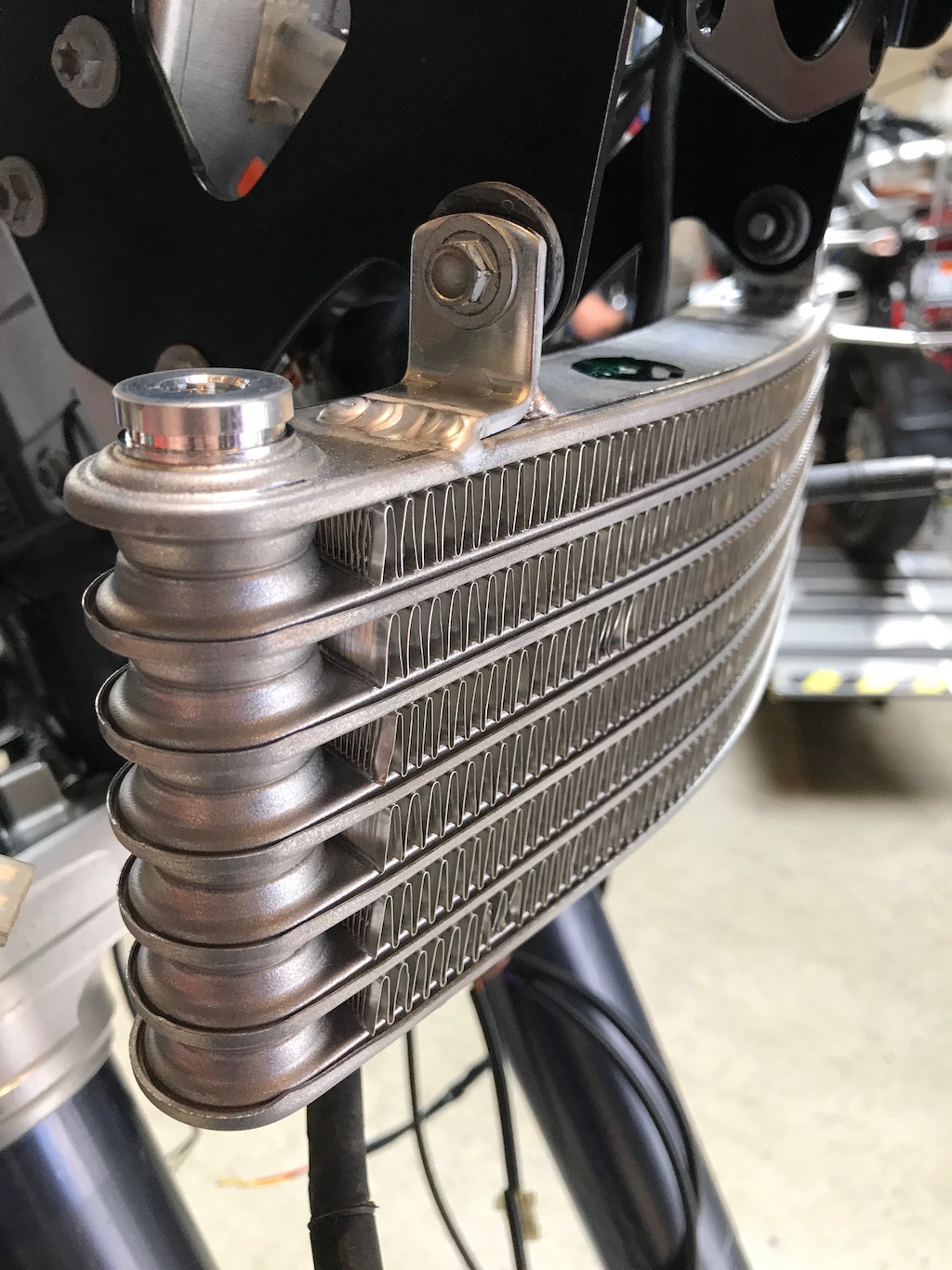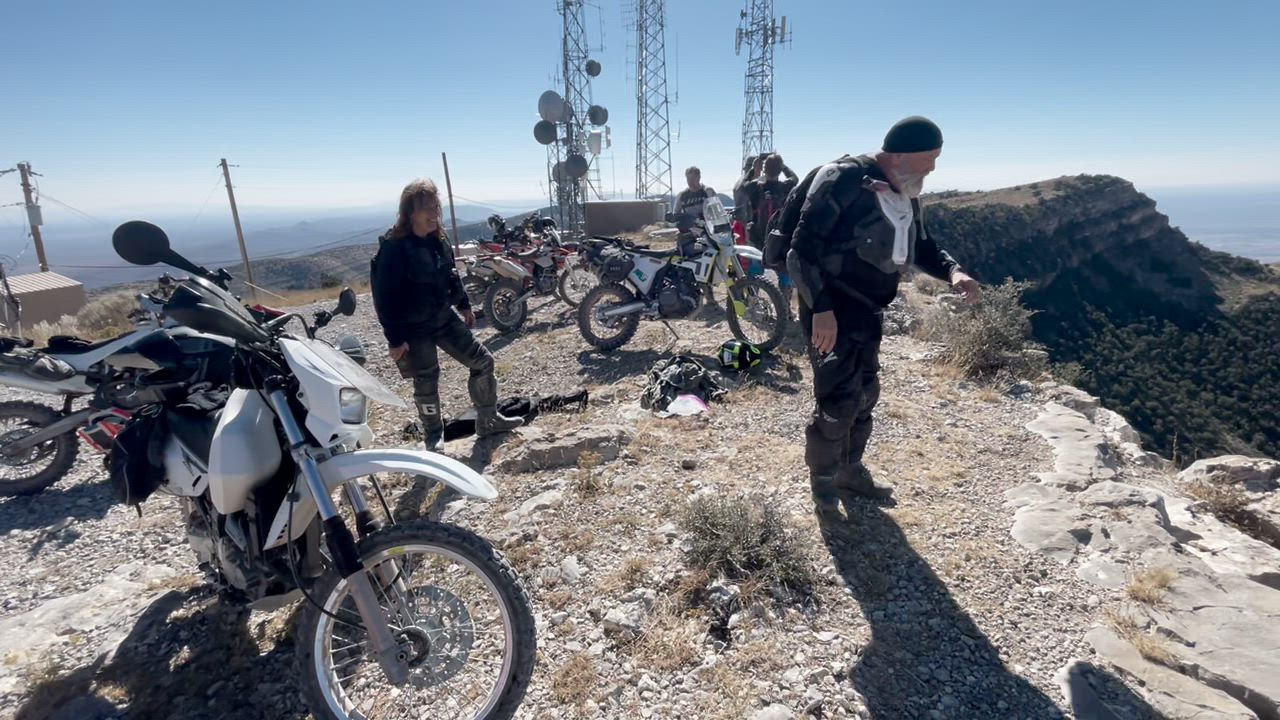Motobene
Well-known member
I'll in future be aware of potential over heating problems, so thanks for sharing this.
Years ago I did something similar to your fan on my ranch ATV, a wonderful 1997 Honda 300 4-Trax, which is air cooled. Used for everything. We also used this machine in summer with a sprayer tank on board to hand spray mesquite saplings to keep small mesquite trees from taking over pastures. A slow process best done with no wind, and in the heat. I mounted a squirrel cage fan forward of the cylinder with the output aimed it back at the front top of the head. A switch on the steering console turns the fan on to flood the head with cooling air, allowing us to idle and keep working without melting the poor thing.
I hadn't thought about cooling being an issue on the 701. So far no rides have raised issues. My hottest ride was perhaps 90 degrees ambient. Even the tech terrain I rode in WY had me moving in 1st or charging hard in 2nd, so there was always some air moving through the radiator separate from the cooling fan.
Lots of variables regarding heating and heat removal. Often the rider is not considered as a significant variable, but rider management of throttle and clutch relative to the conditions is a huge determiner of how heat is managed over time. I describe 'personality' of throttle and clutch use as one significant variable. Personality/skill differences determine the efficiency of converting chemical energy (gasoline) into kinetic energy (motion). Interesting variables like some riders tending to lead rpm and trail with throttle, while others do the opposite weigh in. Grunters versus revers, if you will. Some riders are just in a big damned hurry all the time. In my training course I emphasized thoughtful riding and manipulating time to avoid getting in a hurry to injure the body or equipment. Lots of ways this can play out. Take two riders on the same brand and size machine in wet and sticky mud, riding side by side. One rider will not harm the body with crashes or the machine, while the other rider will will become distressed and frenetic, fall repeatedly, use a ton of throttle, and burn up the clutch.
I use VERY little throttle and clutch when creeping, so much less heat is produced. I also know how long I can sustained-slip the clutch and will either stop for a few seconds or speed up enough to lock up the clutch.
The Rekluse clutch helps a lot as I can creep at very low rpm with no worries of stalling, and no manual clutch hysteresis while trying to maintain consistent slip.
Here is an example of just enough clumsy management of throttle and clutch in difficult conditions to burn up a clutch. World traveler Itchy Boots gets a helping hand from a local in green shirt who IS a very skilled rider, but ends up burning up her clutch:
One of the worst scenarios of over heating is getting trapped in stop-and-go traffic. That's about the only time I use the right thumb engine stop switch, stopping the engine when stopped, and starting to move forward to the next stopping spot. Engines shut off between idling are shedding, not producing, heat.
Years ago I did something similar to your fan on my ranch ATV, a wonderful 1997 Honda 300 4-Trax, which is air cooled. Used for everything. We also used this machine in summer with a sprayer tank on board to hand spray mesquite saplings to keep small mesquite trees from taking over pastures. A slow process best done with no wind, and in the heat. I mounted a squirrel cage fan forward of the cylinder with the output aimed it back at the front top of the head. A switch on the steering console turns the fan on to flood the head with cooling air, allowing us to idle and keep working without melting the poor thing.
I hadn't thought about cooling being an issue on the 701. So far no rides have raised issues. My hottest ride was perhaps 90 degrees ambient. Even the tech terrain I rode in WY had me moving in 1st or charging hard in 2nd, so there was always some air moving through the radiator separate from the cooling fan.
Lots of variables regarding heating and heat removal. Often the rider is not considered as a significant variable, but rider management of throttle and clutch relative to the conditions is a huge determiner of how heat is managed over time. I describe 'personality' of throttle and clutch use as one significant variable. Personality/skill differences determine the efficiency of converting chemical energy (gasoline) into kinetic energy (motion). Interesting variables like some riders tending to lead rpm and trail with throttle, while others do the opposite weigh in. Grunters versus revers, if you will. Some riders are just in a big damned hurry all the time. In my training course I emphasized thoughtful riding and manipulating time to avoid getting in a hurry to injure the body or equipment. Lots of ways this can play out. Take two riders on the same brand and size machine in wet and sticky mud, riding side by side. One rider will not harm the body with crashes or the machine, while the other rider will will become distressed and frenetic, fall repeatedly, use a ton of throttle, and burn up the clutch.
I use VERY little throttle and clutch when creeping, so much less heat is produced. I also know how long I can sustained-slip the clutch and will either stop for a few seconds or speed up enough to lock up the clutch.
The Rekluse clutch helps a lot as I can creep at very low rpm with no worries of stalling, and no manual clutch hysteresis while trying to maintain consistent slip.
Here is an example of just enough clumsy management of throttle and clutch in difficult conditions to burn up a clutch. World traveler Itchy Boots gets a helping hand from a local in green shirt who IS a very skilled rider, but ends up burning up her clutch:
One of the worst scenarios of over heating is getting trapped in stop-and-go traffic. That's about the only time I use the right thumb engine stop switch, stopping the engine when stopped, and starting to move forward to the next stopping spot. Engines shut off between idling are shedding, not producing, heat.



